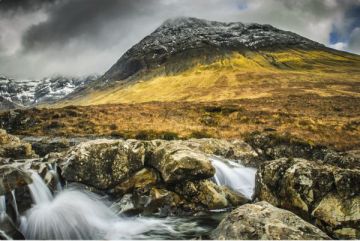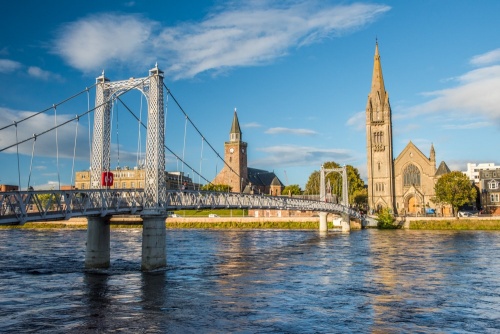
Inverness is the capital of the Highlands and grew up around the River Ness at the point where it empties into the Moray Firth. The city stands at the eastern end of the Great Glen, a long valley that stretches from Fort William on the west coast of Scotland.
History
There has been a settlement here since at least the 6th century when St Columba journeyed up the Great Glen from his base on Iona to preach to the Pictish King Brude. Columba wasn't immediately successful, but according to tradition, Brude granted him land beside the river on which to build a church. There is still a church there some 1500 years later; the Old High Church, the oldest building in Inverness.
There was a fortress at Inverness by the early 11th century. According to Shakespeare, it was at Inverness Castle that Macbeth murdered King Duncan in 1040 (though in fact, Duncan died at Elgin). In 1057 Malcolm III built a timber fortress on the site of the present Inverness Castle. In the early 12th century King David I made Inverness a royal burgh, assuring the settlement's prosperity.
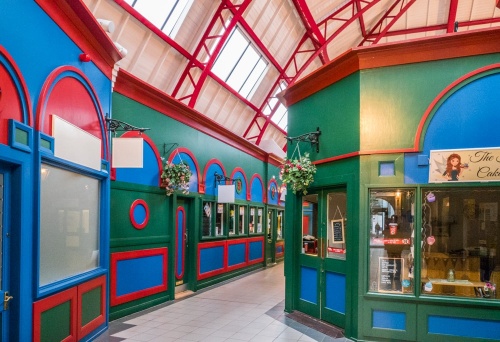
In the early medieval period Inverness flourished as a centre for fishing and shipbuilding and the port was busy with boats carrying fur, wool and animal hides.
Edward I captured Inverness Castle in 1303 but the English were soon ousted by Robert Bruce. This was just the first of numerous attacks on Inverness. Over the course of the next few centuries, Inverness was besieged and burnt several times.
In 1411 Donald, Lord of the Isles sacked the town, prompting the Earl of Mar to rebuild the castle in stone. In 1428 King James I put Alexander MacDonald in prison, but when he was released MacDonald returned at the head of an army, destroying much of the town.
Inverness grew in the 16th century as a port. In 1592 King James VI granted Inverness a new charter, known as the Great Charter or Golden Charter. As a point of curiosity, the charter was granted on 1 January 1592, but at that time the new year did not officially begin in Scotland until 25 March, so 1 January 1592 was actually 1591! The Great Charter granted Inverness the right to hold two markets weekly and create what was essentially a monopoly on trade along Scotland's east coast.
Oliver Cromwell and his English troops occupied Inverness from 1652 and built a fort, or citadel, using stones from nearby religious buildings such as Fortrose Cathedral. Jacobites under Bonnie Prince Charlie occupied Inverness in 1746. The Jacobite dream died at the Battle of Culloden, just outside Inverness.
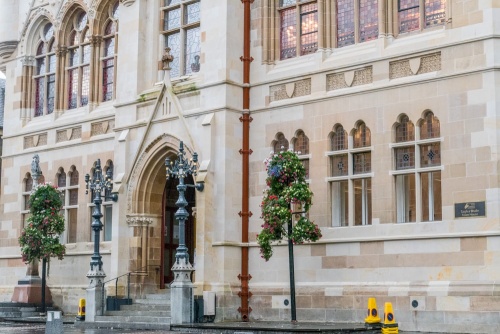
By the late 18th century Inverness had become an important port and a centre for whisky distilling. The Caledonian Canal reached Inverness in 1822, linking the east end of the Great Glen to the west coast at Fort William, but it was the coming of the railway in 1855 that really transformed Inverness. Many of the most impressive historical buildings date from the late 19th century, including Inverness Cathedral and the ornate Town Hall.
Is Inverness a town or city?
As of 2000 Inverness is officially a city. The distinction is partly due to the cathedral being located here, but the official status also gives Inverness a greater degree of government autonomy.
Today the city is still a busy port but it is also a popular tourist destination due to its proximity to Loch Ness and its location on major routes throughout the Scottish Highlands. It is the starting point for the North Coast 500, a circular driving route that stretches 516 miles, following the dramatic coastline of Sutherland and Caithness before returning to Inverness.
What to See
Abertarff House
The oldest house in Inverness, built by the Frasers of Lovat as a townhouse in 1593. Abertarff House features a lovely turret stair and traditional crow-stepped gables. The house is now used by the National Trust for Scotland and is open to visitors when volunteer stewards are available.

Balnain House
On Huntly Street, on the west bank of the River Ness facing the Old High Church across the river stands Balnain House, built by a wealthy merchant in 1726. Following the bloody Battle of Culloden in 1746 it was used a field hospital, housing Hanoverian troops. In the 1880s it became the Highland offices of Ordnance Survey. The house was threatened with demolition in 1968 until it was rescued by the Inverness Civic Trust.
The house was completely restored inside and out and served briefly as a heritage music centre. Balnain House is now owned by the National Trust for Scotland, who use it as offices. It is not normally open to the public but it is extremely easy to reach from the city centre via the Greig Street pedestrian bridge and you can easily explore the outside of the building.
Blackfriars Burial Ground
In 1233 the Dominican order of friars founded a friary in Inverness under the patronage of Alexander II. The friary was never wealthy, but it survived until the Reformation. The only remaining features are a sandstone pillar and the medieval effigy of a knight, thought to be Alexander Stewart, Earl of Mar (c. 1375 – 1435), the victor of the Battle of Harlaw.
The pillar and effigy survive within a small burial ground beside the modern telephone exchange on Friar's Road. Workers in the telephone exchange have reported seeing robed figures wandering amid the graves, presumably the ghosts of medieval friars, who dark robes gave the Dominicans their popular name, the 'black friars'.
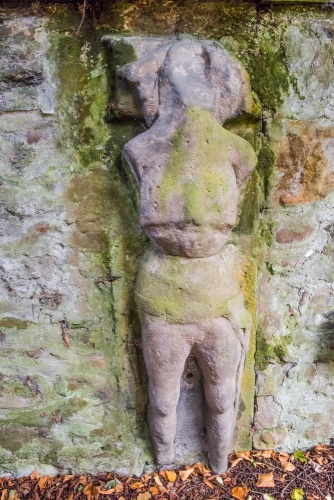
Inverness Botanic Gardens
Housed in the former walled garden of Bught House a stone's throw from the River Ness is an attractive botanic garden once known as the Floral Hall. Here you will find two glasshouses, one showcasing tropical rainforest plants and the other housing cactus species from across the globe. The glasshouses stand in attractive formal gardens.
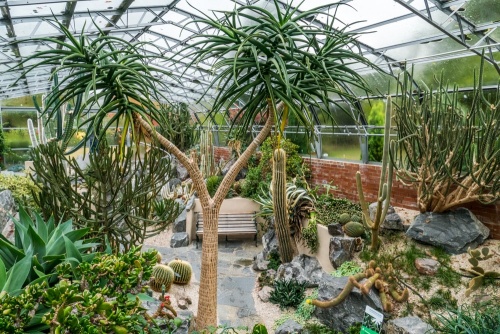
Chapel Yard Cemetery
A short stroll from Blackfriars Burial Ground is another of Inverness' historic burial grounds. Chapel Yard takes its name from the medieval Chapel of St Mary which used to stand in a wide green now occupied by a graveyard. Naturally enough it became known as the Chapel of the Green. The oldest gravestone dates from 1604 and marks the burial place of Hester Eliot, a descendant of Mary, Queen of Scots.
Craig Phadrig
Is this the original Inverness? On a hill overlooking Inverness and the Moray Firth is the Iron Age hill fort of Craig Phadrig, traditionally said to have been reused by the Pictish King Brude in the 6th century. St Columba preached to Brude and - according to some sources - converted him to Christianity in AD 565. Access from the city centre is extremely easy, and there are signposted circular walks taking in the hill fort ramparts and the surrounding woodlands.
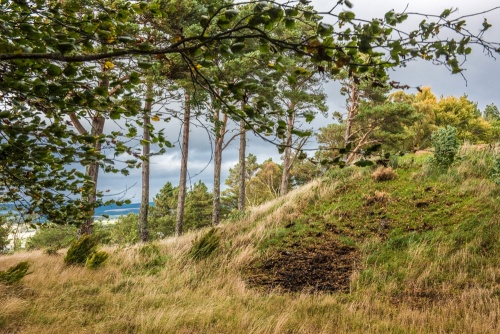
Dunbar's Hospital
On Church Street, almost opposite Abertarff House is Dunbar's Hospital, built in 1668 as a charity hospital by Alexander Dunbar, Provost of Inverness. It is thought to have been made with stone robbed from Oliver Cromwell's Citadel which, in turn, robbed stones from local churches such as Fortrose Cathedral, so the stones you see today were probably in use at least twice and may date to the early medieval period.
In the 17th century the word 'hospital' did not have the same connotation it does today and Dunbar's Hospital was intended primarily as an almshouse, offering shelter to the poor of Inverness.
Over the centuries the Hospital had many uses including a grammar school, library, and storehouse. One of the items stored in the Hospital was the town gallows. It is now used by a shop and houses a senior citizen's centre.
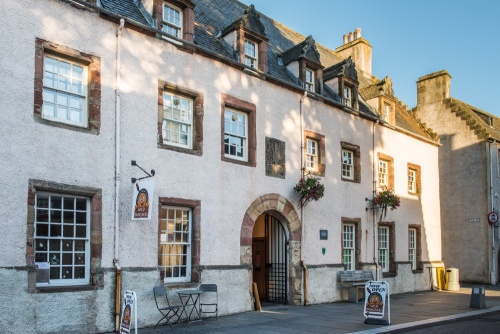
Inverness Castle
There has been a castle in Inverness since at least 1057 when Malcolm III built a timber fortress on the present site above the east bank of the River Ness. In Shakespeare's play Macbeth the title character murders King Duncan at Inverness Castle, but in truth, Duncan died near Elgin. Edward I captured Inverness Castle in 1303 but Robert Bruce seized it 5 years later.
The castle was completely rebuilt by the Earl of Mar in 1412. In 1562 the 4th Earl of Huntly famously refused to let Mary, Queen of Scots enter the castle. Her supporters besieged the castle and the Earl was forced to submit. He was hanged for his insolence but the Huntlys retained the post of hereditary castle keeper.
The medieval castle was finally destroyed by government forces following the 1745 Jacobite rebellion. Today's castle was begun in 1836 as a combination gaol and courthouse. The only surviving feature of the medieval fortress is the castle well.
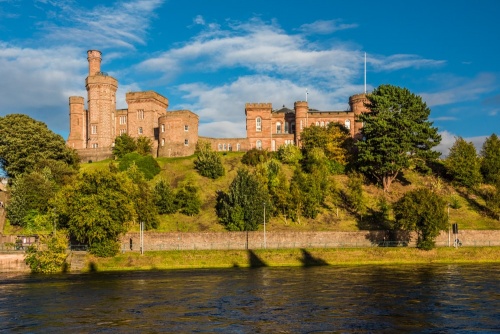
Inverness Cathedral
One of the first cathedrals built in Britain after the Reformation, Inverness Cathedral stands on the west bank of the River Ness almost opposite Inverness Castle. The cathedral was begun in 1862 and opened for worship in 1869.
Highlights include a medieval painting of the Madonna and Child by Sano di Pietro, and a collection of Russian ikons given by Tsar Alexander II of Russia to Bishop Eden in 1866. In St Andrew's Chapel hangs the White Ensign of the Royal Navy, brought here from the Cenotaph in London for safekeeping.
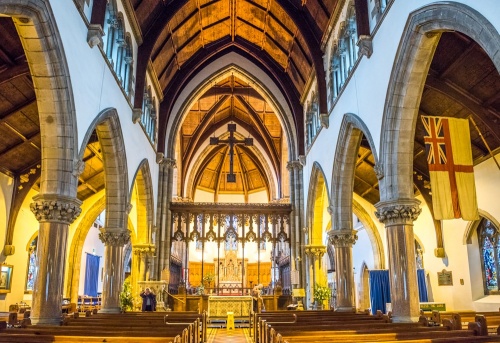
Inverness Museum
Directly below Inverness Castle stands the Inverness Museum and Art Gallery, a fascinating modern museum covering the heritage of Inverness, the story of the Picts, the Caledonian Canal, and silver production in the Highlands. There are special exhibits on the Jacobites featuring several items owned by Bonnie Prince Charlie, including the Prince's death mask.
There is also a collection of geological specimens given by the influential Scottish geologist Hugh Millar. Exhibits are arranged over two floors and follow a timeline from the earliest settlements in the Highlands to the modern city of Inverness.
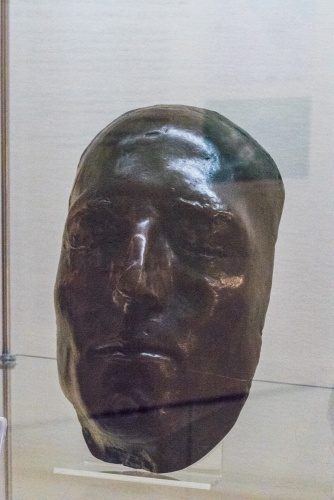
Knocknagael Boar Stone
In the Highland Council offices on Glenurquhart Road (the A82) stands a huge stone carved with the figure of a boar. The Knocknagael Boar Stone dates to the 7th century and in addition to the boar it is carved with the traditional Pictish symbol of a mirror case.
We do not know what the Boar Stone was used for; it may have been a boundary marker or perhaps a gravestone. It was brought inside the Council offices to protect it from weathering.
Ness Islands
A pleasant walk along the bank of the River Ness from the castle brings you to Ness Islands, joined to the mainland by a pair of picturesque suspension bridges. The islands were purchased by the council in the early 19th century to serve as a public park and nature reserve.
Here, just a few minutes walk from the city centre, you can spot otter, seals, and the occasional deer. Since there are bridges to the islands from both banks you can easily enjoy a circular walk, going down one side of the river and back up the other.
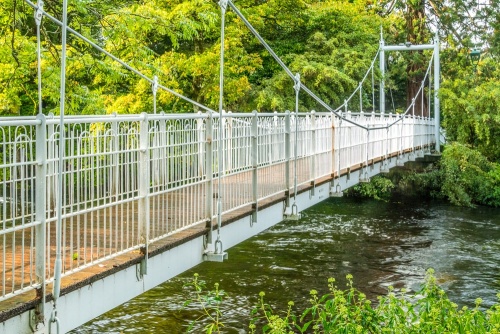
Old High Church
On a low hill overlooking the River Ness stands the Old High Church, an 18th-century church incorporating an earlier medieval building. It was on this site in AD 565 that St Columba is said to have built a church.
After the Battle of Culloden, Jacobite prisoners were imprisoned in the church tower before being led into the churchyard and executed. Within the church is the Cameron Memorial, a reminder of the church's close ties to the Cameron and Seaforth Highlanders.
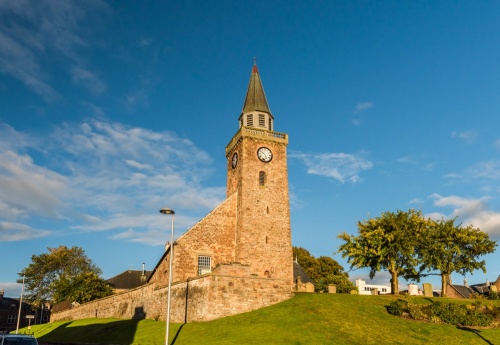
Town House
At the corner of High Street and Castle Street stands the Town House, originally used for civic administration but now a venue for meetings, civic functions, weddings and concerts. The Town House was begun in 1878 and designed by architect William Lawrie.
The beautiful Victorian building replaced an earlier Town House built in 1708 as the residence of Lord Lovat. Lord Lovat's home was converted for use by the town council in 1716 and was torn down in 1878.
The interior is sumptuous, with a grand staircase rising up to the main rooms on the first floor, including the wood-panelled Council Chamber. It was here that the British Cabinet met in 1921 - the only time until that point that the Cabinet had met outside London - to determine the plan for Irish independence that became known as The Inverness Formula.
Visitors can take regular guided tours of the Town House, available through the Inverness Museum and Art Gallery.
Outside the Town House on High Street is the Old Town Cross or Old Mercat Cross, built in 1685.
Victorian Market
One of Inverness' most colourful visitor attractions is the Victorian Market, a late 19th-century shopping arcade still boasting its richly decorated and brightly pained shopping stalls. Until 1876 Inverness had only open-air markets. In 1870 the town council began a covered market off Academy Street.
The market was destroyed by fire and rebuilt in 1891. Only the original 1870 entrance on Academy Street remains of the first market. Look for the sculpture of a bull's head on top of the entrance arch. The market is topped by a Victorian cast-iron domed roof.
If you enter by Church Street look for marks on the sandstone entrance arch made by fishmongers sharpening their knives.
Nearby
Culloden Battlefield
On 16 April 1746 Bonnie Prince Charlie's dream of seizing the British throne ended in bloody defeat at Culloden Moor, just outside Inverness. The Prince's Jacobite supporters were routed by government troops under the Duke of Cumberland and he was forced to spend months as a fugitive until he could make his escape overseas.
The Culloden Battlefield site is now preserved by the National Trust for Scotland. Trails lead across the moor, past the graves of Highland clans that fought and died for the Jacobite cause.
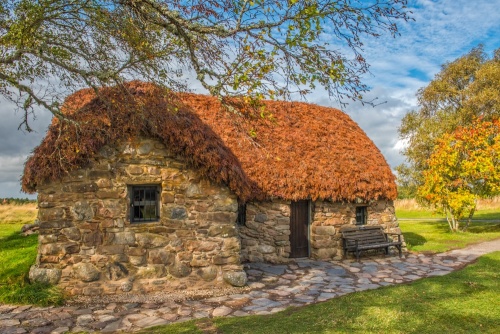
Clava Cairns
A mile from Culloden Battlefield is one of the most important prehistoric sites in Scotland, a complex of Bronze age burial cairns erected around 2000 BCE. Clava Cairns is a remarkable site, featuring ring cairns, a kerb cairn, passage graves, standing stones and a medieval chapel. Clava Cairns inspired the fictional Craigh na Dun in the popular Outlander books and TV series.
Fort George
A short drive north of Inverness brings you to Fort George, a Georgian military fort at the mouth of the Moray Firth. Fort George was built in the aftermath of Bonnie Prince Charlie's rebellion to prevent any further Jacobite uprising in the Highlands.
The fort defences face inland, a clear indication of where George II saw the major threat coming from. Inside Fort George is the Regimental Museum of the Highlanders (Seaforths & Camerons) and the regimental chapel, designed by Robert Adam.
About Inverness
Address: Inverness,
Highlands,
Scotland
Attraction Type: Town
Location: At the junction of the A9, A96 and A82.
Website: Inverness
Location map
OS: NH668453
Photo Credit: David Ross and Britain Express
HERITAGE
 We've 'tagged' this attraction information to help you find related historic attractions and learn more about major time periods mentioned.
We've 'tagged' this attraction information to help you find related historic attractions and learn more about major time periods mentioned.
Find other attractions tagged with:
NEARBY HISTORIC ATTRACTIONS
Heritage Rated from 1- 5 (low to exceptional) on historic interest
Inverness Museum and Art Gallery - 0.1 miles (Museum) ![]()
Abertarff House - 0.2 miles (Historic Building) ![]()
Inverness Castle - 0.2 miles (Castle) ![]()
Inverness Old High Church - 0.2 miles (Historic Church) ![]()
Chapel Yard Cemetery - 0.3 miles (Landmark) ![]()
Blackfriars Burial Ground - 0.3 miles (Landmark) ![]()
Inverness Cathedral - 0.4 miles (Cathedral) ![]()
Knocknagael Boar Stone - 0.5 miles (Prehistoric Site) ![]()
Nearest Holiday Cottages to Inverness:
Nearby accommodation is calculated 'as the crow flies' from Inverness. 'Nearest' may involve a long drive up and down glens or, if you are near the coast, may include a ferry ride! Please check the property map to make sure the location is right for you.
Inverness, Highlands and Islands
Sleeps: 4
Stay from: £437 - 1983
Inverness, Highlands and Islands
Sleeps: 8
Stay from: £838 - 4470
More self catering near Inverness



